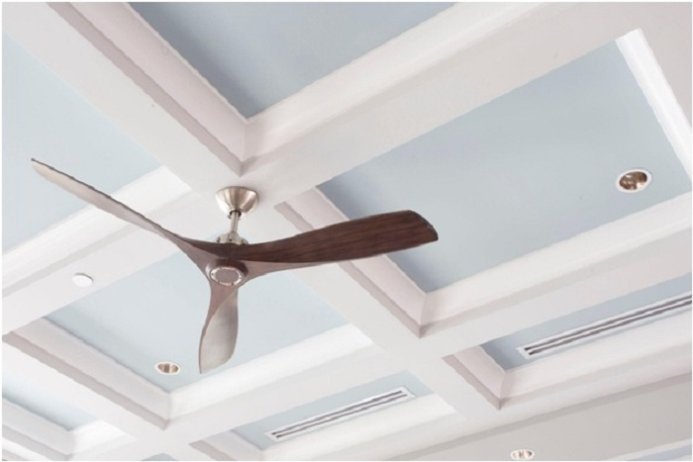Ceiling fans are the simple gadgets in our homes that are easily overlooked. You only remember them when it starts getting uncomfortably hot and forget about them once the weather becomes favorable. Some people prefer to use air conditioners and only turn on fans once in a while. While air conditioners use 3,500 watts of energy when running, fans use an average of 60 watts per month. Running fans can help you cut energy costs significantly if you use them wisely. In this post, we will share a few tips and tricks you can try to maximize ceiling fans throughout the year and save big on energy usage.

1. Get the Right Size
If you want to get the most out of your fan, you need to get the right size for the room or space. Big fans can work well in spacious rooms, like the living areas used by more than two people, while small ceiling fans can work well in rooms occupied by one or two people at the same time, such as the bathroom or home office. Checking the size of a fan means choosing a fan with a blade size ranging from 29 to 60 inches. The most popular is the 52-inch model. You can measure or assess the room you want to install the fan and determine which fan size will suit your needs.
2. Adjust the Direction of the Ceiling Fan to Rotate Counterclockwise During Summer
Many people do not know that their fans come with a clockwise and counterclockwise setting for a valid reason—different seasons. If you stand beneath your fan and carefully check your fan’s rotation during summer, you will notice that it rotates in a counterclockwise direction. This is the summer setting designed to create a cool breeze to cool you during the hot months. During summer, the air is blown downwards directly below the fan, creating a massive air movement in the center of the room, cooling your skin.
3. Adjust the Direction of Ceiling Fan to Rotate Clockwise During Winter
If your fan is not set in the clockwise direction, check for a small button or switch at the base that sets the fan to run in the opposite direction. Running your fan in a clockwise direction helps circulate and direct warm air to the center of the room below the fan. This forces warm and cool air to mix, keeping the room in steady warm temperatures.
4. Set the Temperatures Higher During Summer
It’s essential to make it a habit to use your fan constantly during hot days to get the most out of it. To do so, set the thermostat higher by a few degrees. The fan doesn’t cool the air; it only circulates it at a higher speed, creating that breeze effect that makes your body feel cooler. Remember, fans don’t interfere with room temperatures and only cool people, not rooms.
5. Take Advantage of the Lighting
If one of the rooms in your home is not very well lit, you can get a ceiling fan with LED lighting to cool and light the room. You will cut electricity costs in this room significantly as LED bulbs are energy-saving. You can also use fans with lighting by turning them on at night in areas that don’t need too much light, such as the bedroom and dining space.
6. Invest in Modern Ceiling Fans
Modern ceiling fans are the best if you want to decrease your energy bills during summer. Most models are programmable. You can turn them on and off, and virtually operate them from wherever you’re. If you forget to turn off the fan when you are exiting the house or office, you can always turn it off using your phone, saving energy in the long run. Consider investing in an Energy Star certified fan. The latest and most efficient motors are the direct current or DC motors that offer up to six speeds and use only 33 watts of electricity. You can also get a remote-controlled fan, making it easy to turn it on and off when necessary.
7. Make Sure Your Fan’s Blades Angle is 12 Degrees and Above
When buying a ceiling fan, it’s essential to check the blade angle before making the final purchase decision. If the blade angle is less than 12 degrees, the fan will be more of a decoration than an energy-saving device. Ideally, you want a fan that will push air downward and upward. Fans with blade angles below 12 degrees will rotate but only cut through the air without pushing it at all. While above 12 is okay, a 15-degree angle is the most recommended. Remember to check the room size as degrees above 12 can be overwhelming for some spaces. For instance, don’t install a 15-degree blade angled fan in your home office as the strong breeze may end up blowing your papers and books.

